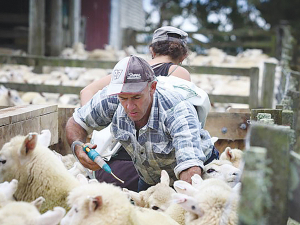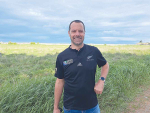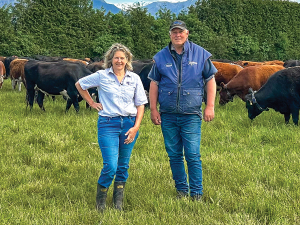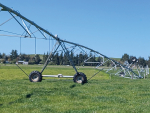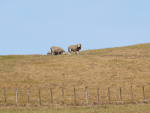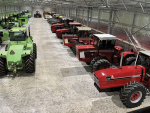Ben Allott, of North Canterbury Vets, says sheep and beef farmers are often encouraged to use triple active drenches to get around drench resistance issues. But this ignores a need for changes that would address the fundamental causes of an environment in which drench resistance occurs.
Stocking policies that drive a reliance on chemicals to control internal parasites create the perfect environment for breeding drench resistant worms.
These include intensive lamb finishing operations, particularly under irrigation and dairy heifer grazing.
A 50:50 cattle/sheep ratio is very effective at controlling internal parasites, with each species effectively vacuuming up the other’s species specific worm larvae off pasture.
Farming systems that target adult animals and run relatively low numbers of young stock, such as hill country breeding and store properties, will also be at lower risk of developing drench resistance than finishing farms or farms with a dedicated intensive finishing system within them, says Allott.
“When stocking ratios are out of balance and you have 100% sheep or cattle, or just young animals, it forces you to use a lot of chemical to control parasites,” he said.
He says refugia is critical to prevent drench resistance, but insists that it is a complex issue that can be difficult to fully understand.
Put simply, refugia is implementing stock management strategies that enable populations of drench susceptible worms to be maintained and critical to prevent drench resistance occurring.
But these strategies must be fully understood and implemented correctly, so Allott encourages farmers to attend a Wormwise workshop to gain a clear understanding of this vital management tool.
“Refugia must be a focus,” he said.
He says the provision of ‘clean’ feeds, eg summer rape crops and lucerne stands, can allow the interval between lamb drenches to be extended. The 28 day rule is to prevent pasture recontamination.
“But again, this is just another tool to effectively control internal parasites and needs to be managed correctly.”
Allott says faecal egg counts (FEC) are not a simple measure of internal parasite burdens because other factors, eg worm species and the feed the animal has been eating, can have a big influence on egg counts. A low drymatter feed, for example, will dilute the number of eggs.
“FEC is a convenient, easy tool but a lot of factors influence it,” he said. “If you are relying on FECs to drive the timing of drench decisions you need to repeat them frequently otherwise you will miss the boat.”
Allott is also concerned that many sheep and beef farmers don’t know whether they have drench resistance on their properties and may be using drenches that are not effective.
“This can be determined very simply with a FEC reduction test and having an understanding of the resistance or susceptibility status of the worm population on an individual farm. It will be central to developing a long-term strategy for the control of production limiting internal parasites.”
Allott believes genetics are also crucial to long term management of internal parasites.
“Genetics are going to be a huge part of the solution.”
He points out that it takes 10 years before genetic traits such as resistance and or resilience become firmly established in a ewe flock, so farmers need to start exploring genetics long before they need it to manage internal parasites.
What's wormwise?
Wormwise is part of the industrys work to develop a national worm management strategy. This involves managing and integrating research work, education, communication and extension services for farmers, veterinarians, key influencers and retailers.
Beef + Lamb NZ runs the Wormwise workshops which can be held on request.
New standards to improve traceability
OSPRI says new NAIT standards and guidelines will bring added value for farmers.
It also claims that other NAIT users – such as tag manufacturers, accredited entities and information providers – will all now come under greater scrutiny.
These changes come after the recent NAIT standards consultation.
“The three new standards will mean more targeted performance and monitoring of third-party information providers to NAIT, says head of NAIT Kevin Forward.
“These will also provide more accountability on livestock data transfer and privacy with formal contracts, regular audits, and renewal of accreditation every three years.”
He says the NAIT system can no longer operate in isolation.
“Improving how the NAIT system works with third party providers is vital for supporting biosecurity preparedness or a response in the event of a future incursion.”
Tag manufacturers will also be closely monitored to see that they provide tags that don’t fall off.
A tag reporting process is to be introduced with more education for farmers on best practice in applying and replacing tags.
Forward says this will help OSPRI improve the integrity of NAIT data, alongside the key traceability aspects of tag retention and readability.
“We’ve listened to farmers, and it’s apparent there are issues with tag retention,” he says.
“The new Animal Identification Device Standard will ensure tag manufacturers are held accountable for their products and that they meet international standards.”
Forward says it’s up to farmers now to report any issues with tags.
“OSPRI will be managing this process with NAIT reporting annually on complaints received and any emerging trends.”

